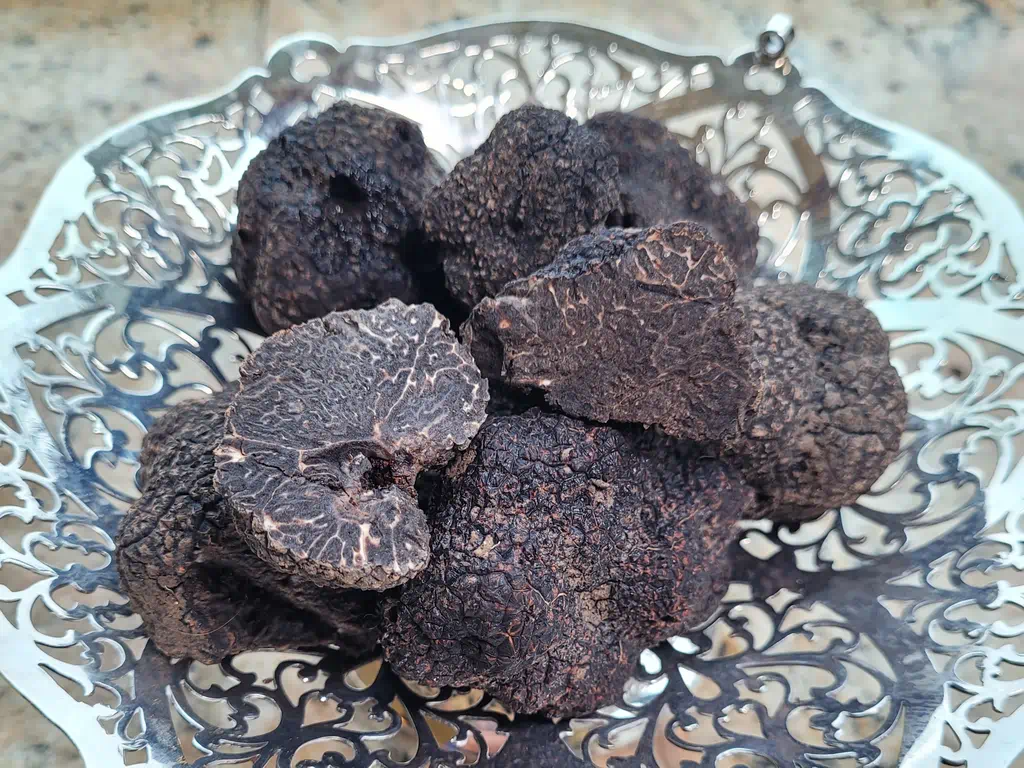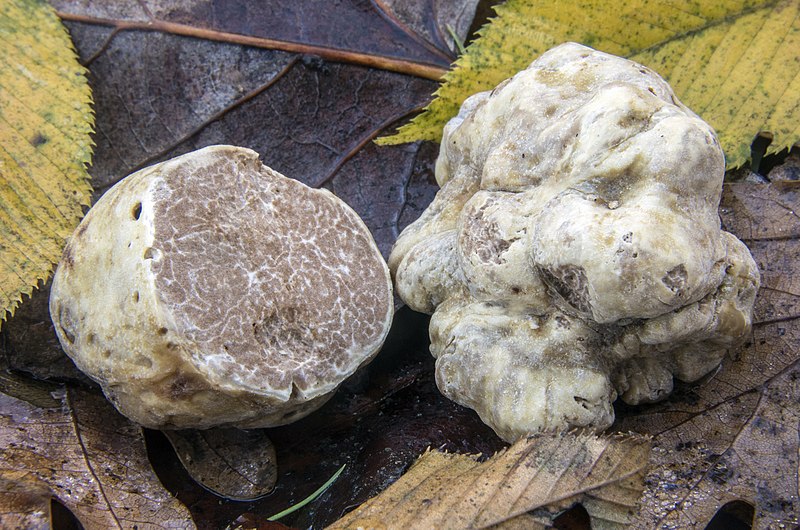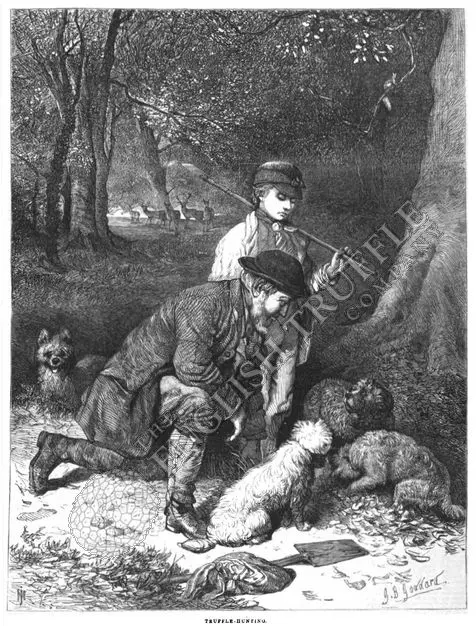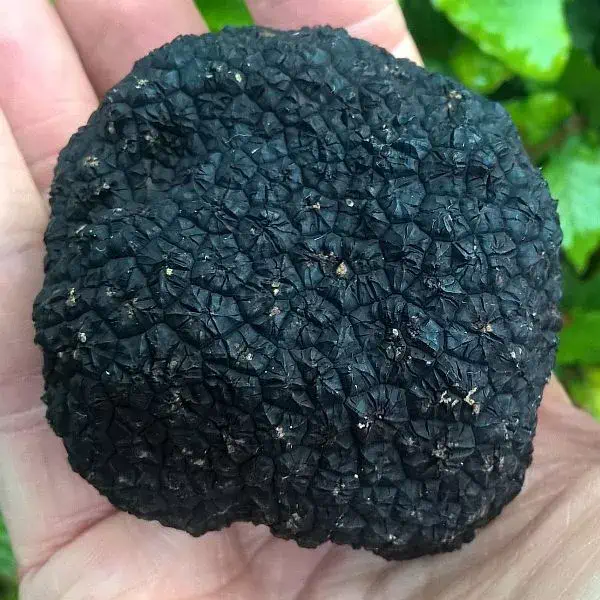What are truffles?
Truffles are underground fungi usually found in close association with a tree. Many species are rare, edible and as they are considered to be delicacies, are among the world’s most expensive foods. The best species can cost over €10,000 / kilogram. A single white truffle was once sold for £165,000!
To reproduce, truffles rely on being dug up and eaten by animals and then spread in their dung. Their aroma attracts such animals and also appeals to gourmets. This aroma has been used by truffle hunters with pigs to locate this buried treasure. Today, it is trained dogs that have largely replaced pigs. On the continent and in other countries truffles are big business.
Black and White
Often people think there are two types of truffles based on the colour of their skin – black and white. Actually, these are high level descriptions with a number of species of both skin colours. It is similar to describing trees as deciduous or coniferous, there are many species of each. Only a small number of species are regularly found and sold. The most famous, and expensive species of truffle are:
- The black winter (Périgord) truffle (Tuber melansporum) is named after the Périgord region in France. It is native to southern Europe but has been cultivated in many countries, principally France, Spain and Italy but also in others including Australia, New Zealand, USA, Chile and, at a few locations in the UK.

- The Italian white (Alba) truffle (Tuber magnatum) is mainly found in parts of the Piedmont region in northern Italy but also in limited parts of neighbouring countries such as France, Croatia, Slovenia and Serbia. It is only recently that researchers have managed to cultivate it at a very small number of locations. It is one of the most valuable foodstuffs in the world.

English Truffles
History
While not as well-known than as their continental cousins – The black winter (Périgord) and the Italian white, English truffles are still prized for their culinary value. Two types are of particular interest, both grow just beneath the ground surface near beech, hazel, oak and birch trees and are found in the rich soils of chalk downs. Many people are unaware that England and other parts of the UK, have truffles growing wild, however, they have been gathered and sold here for several hundred years. Knowledge of these truffles died out in around 1930 but interest in them has increased since the start of the new millennium and again there is a small, but growing truffle industry. You can read about the history of English truffles.

Reputation
English truffles have a growing reputation; they have appeared in prize-winning dishes, chef competitions and in 2020 were included in the dinner for the BAFTA awards. They are served in leading UK restaurants, increasingly appear on the dining tables of diligent consumers and also used by food manufacturers, both large companies and small artisan producers.


We produce several newsletters per year with truffle news, events, goods, services and offers.
Truffle Species
While 13 truffle species are known growing wild in Britain, to scientists, we have only one important culinary species – the summer truffle (Tuber aestivum). The culinary world, however, due to differences in season, aroma and taste, recognise two different species – summer and autumn truffles. The latter are sometimes known as Burgundy or English truffles.
Summer Truffles
The summer truffle (Tuber aestivum) is the commonest species in Europe. The skin is black in colour with pronounced pyramid-shaped warts. When cut in half, they have a white marbling on a pale cream to light brown background. Their season is May to August, though we would not recommend them early in the season when the flesh is light, and aroma and flavour are minimal. They improve as the season goes on and the flesh darkens. The flavour, described as nutty-tasting, and aroma are more subtle than the well-known varieties but can still command prices of several hundred pounds per kilogram.

Autumn Truffles
The autumn or Burgundy truffle (Tuber uncinatum) is a very close cousin to the summer truffle with similar size, shape and colour. It is found in many parts of Europe and is highly prized. They ripen from September to January or February. When ripe, they have a darker brown, marbled flesh and their aroma and taste are much stronger than their summer counterparts meaning they command higher prices. Fresh English autumn truffles can be ordered from us when in season.
Summer or Autumn?
With differences in taste, aroma, season and spore morphology, summer and autumn truffles were originally treated as two separate species. Today, the scientific world, informed by molecular (DNA) studies, consider them the same species, with autumn truffles (Tuber aestivum var. uncinatum) being an autumnal variety of summer truffle (Tuber aestivum var. aestivum). The differences are now considered to be a consequence of ecological rather than evolutionary factors. The commercial world however, with the differences in ecology, seasonality and price, does differentiate between summer and autumn truffles applying the names Tuber aestivum and Tuber uncinatum respectively.
